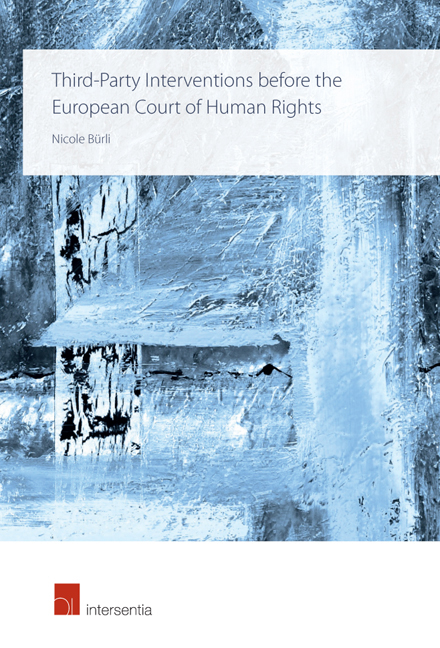 Third-Party Interventions before the European Court of Human Rights
Third-Party Interventions before the European Court of Human Rights Published online by Cambridge University Press: 29 September 2018
CONTEXT AND SCOPE OF THE STUDY
In 2009, the Second Section of the European Court of Human Rights (the Court, the European Court) decided the case of Lautsi v Italy, which had been lodged by an atheist mother who opposed the compulsory display of a crucifix in her son's school. What was at stake, however, was much more than just a crucifix in a public school. The case dealt with the very question of the relationship between the state and the church or between politics and religion. When the decision was referred to the Grand Chamber it attracted interest never before seen: a seminar on ‘ religious symbols in the public space ‘ was organised by members of civil society, academics and government representatives; scholarly papers and memos were published; and the Patriarch of Moscow mobilised Eastern European states to oppose the judgment. Ultimately 10 member states, 10 non-governmental organisations (NGOs) and 33 members of the European Parliament submitted a third-party intervention. While some interveners argued that states had a wide margin of appreciation when deciding about their relationship to the church, others were of the opinion that only a neutral and secular state could comply with the European Convention on Human Rights (the Convention).
Although the Lautsi judgment was unprecedented in terms of reactions it produced, it is not an isolated case. As the Court increasingly decides highly debated and contentious issues, such as the legality of abortion, gay marriage or assisted suicide, more and more organisations, individuals and governments are potentially aff ected by the Court's judgment and thus seek to intervene in proceedings. Acknowledging a certain public interest in its decision-making, the Court accepted the first intervention in 1979. From 1998 the competence of the Court to ‘invite any High Contracting Party which is not a party to the proceedings or any person concerned who is not the applicant to submit written comments’ has been enshrined in Article 36 of the Convention. Ever since, interventions have become an important mechanism enabling participation in the decision-making process of the Court. Members of civil society as well as states have recognised the potential of third-party litigation as a tool with which to influence international law.
To save this book to your Kindle, first ensure no-reply@cambridge.org is added to your Approved Personal Document E-mail List under your Personal Document Settings on the Manage Your Content and Devices page of your Amazon account. Then enter the ‘name’ part of your Kindle email address below. Find out more about saving to your Kindle.
Note you can select to save to either the @free.kindle.com or @kindle.com variations. ‘@free.kindle.com’ emails are free but can only be saved to your device when it is connected to wi-fi. ‘@kindle.com’ emails can be delivered even when you are not connected to wi-fi, but note that service fees apply.
Find out more about the Kindle Personal Document Service.
To save content items to your account, please confirm that you agree to abide by our usage policies. If this is the first time you use this feature, you will be asked to authorise Cambridge Core to connect with your account. Find out more about saving content to Dropbox.
To save content items to your account, please confirm that you agree to abide by our usage policies. If this is the first time you use this feature, you will be asked to authorise Cambridge Core to connect with your account. Find out more about saving content to Google Drive.